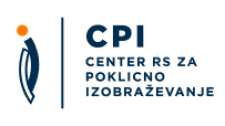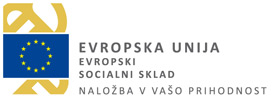Diplomirani tekstilni inženir (vs)/diplomirana tekstilna inženirka (vs)
| Name of qualification | Name of qualification: Diplomirani tekstilni inženir (vs)/diplomirana tekstilna inženirka (vs)Add to comparison |
|---|---|
| Translated title (no legal status) | Translated title: Bachelor of Applied Science in textile engineering |
| Type of qualification | Type of qualification: Professional bachelor's degree |
| Category of qualification | Category of qualification: Educational Qualification |
| Type of education | Type of education: Professional bachelor's education |
| Duration |
Duration of education:
3 years
|
| Credits | Credits: 180 credits |
| Admission requirements |
Entry conditions:
|
| ISCED field |
Field:
Engineering, manufacturing and construction
|
| ISCED subfield | subfield: textiles (clothes, footwear and leather) |
| Qualification level |
SQF Level:
SQF 7 |
The qualification holder will be able to:
(general competences)
- demonstrate broad technical knowledge in the field of study, complemented by selected knowledge in the fields of science, management, ICT, aesthetics and the basics of textile design,
- demonstrate understanding of technical topics, including their theoretical background,
- demonstrate practical skills and abilities and immediately take on practical responsibilities,
- identify concrete and abstract practical problems, carry out theoretical analysis, seek solutions and take appropriate action,
- pursue own learning in their own professional field,
- participate in research and development work and transfer research and development achievements into practice,
- demonstrate understanding of the interdependence of technology and design,
- demonstrate understanding of artistic language and its technological translation into textile products and clothes,
- communicate with co-workers and experts from related disciplines, thus enabling active cooperation on joint work, and in the field of projects based on the integration of technical laws with design practice,
- demonstrate professional, ethical and environmental responsibility,
- use modern tools and skills, above all from the ICT field, in everyday professional work,
(subject-specific competences)
- integrate knowledge from the field of textile materials and mechanical and chemical textile technology into a designed product,
- demonstrate understanding of the interdependence of technology and form,
- cooperate creatively with a designer on technologically innovative projects,
- demonstrate familiarity with basic forms of garments from prehistoric times to the present day,
- demonstrate understanding of the interconnection of clothes and cultural development and formal styles of painting, sculpture, architecture, design,
- recognise harmony of function and form, structure, the proportions of the human body and the garment,
- read a sketch and draw basic garments, details and fashion accessories,
- demonstrate familiarity with and understanding of the basics of the scientific theory of fibres and familiarity with the properties of fibres and explain them using the general laws of materials physics and chemistry,
- demonstrate understanding of the influence of different technological phases on the properties of spinning yarn, woven fabrics, knitting yarns, knitted fabrics and fibres,
- integrate knowledge from various fields (construction, modelling, aesthetics, materials) and apply it on the basis of the definition of the purpose of use of a garment,
- optimise technological processes in clothing manufacture and achieve greater quality of finished products,
- demonstrate familiarity with the theoretical bases of finishing, which are the basis for professional work in the fields of dyeing, printing, refining and textile care,
- use equations to determine the parameters of dyed areas and colour differences between a reference area and the dyed area under investigation,
- demonstrate familiarity with the technological processes of preparatory works, dyeing, finishing, textile printing and textile care,
- demonstrate environmental awareness when carrying out textile care processes in the sense of keeping pollution of waste water from laundries and dry cleaners to a minimum,
- demonstrate familiarity with computer programs for computer-supported modelling of fabrics, knitting yarns and knitwear,
- demonstrate mastery of the process of development of garment patterns (construction of a garment pattern),
- supervise, analyse and manage work processes in a textile or ready-to-wear business,
- plan work processes in a textile or ready-to-wear business using the network planning method,
- identify and evaluate costs incurred in the work process,
- demonstrate understanding of the role of marketing in the process of creating high added value in collections of textiles and clothing,
- demonstrate understanding of the need to transform enterprises in accordance with the developing information culture and in this way gain a competitive advantage,
- demonstrate understanding of modern concepts of quality management systems and the understanding of quality,
- functionally apply interpersonal communication, negotiation, teamwork, leadership and creative thinking techniques,
- demonstrate mastery of the methodology of preparing a business plan,
- demonstrate familiarity with the structure, content and possibilities of use of bibliographic and factographic databases for the content of the field of study.
Students' knowledge is assessed by means of practical exercises and seminar papers, and also via products, projects, performances, services, etc. and by examinations. Examination performance is graded as follows: 10 (excellent); 9 (very good: above-average knowledge but with some mistakes); 8 (very good: solid results); 7 (good); 6 (adequate: knowledge satisfies minimum criteria); 5–1 (inadequate). In order to pass an examination, a candidate must achieve a grade between adequate (6) and excellent (10).
In order to progress to the next year, students must obtain confirmation of enrolment and attendance for all subjects in the previous year and have completed all practical classes and the following number of ECTS credits:
-
for enrolment in the second year: at least 54 ECTS credits,
-
for enrolment in the third year: 60 first-year ECTS credits and at least 54 second-year ECTS credits.
Diplomirani tekstilni inženir (vs)/diplomirana tekstilna inženirka (vs)
SQF 7
EQF 6
The Career path tab shows the possible career path within the selected qualification area, which is not the only one and is not mandatory. The actual transition between qualifications, which is determined by law, is defined in the Transition tab.
SQF 8 / EQF 7
Second-cycle master's study programmes (SQF level 8)
To complete their studies, students must complete all course units in all subjects in which they have enrolled and prepare and defend a diploma thesis.
University of Ljubljana, Faculty of Natural Sciences and Engineering
URL
Awarding body URL:Upcoming event
International Conference: 10 years of Slovenian Qualifications Framework
International Conference: 10 years of Slovenian Qualifications Framework Brdo Congress Centre, Predoslje 39, 4000...
© Center RS za poklicno izobraževanje, 2018. All rights reserved
Sitemap General legal notice Cookie Policy Production: ENKI







